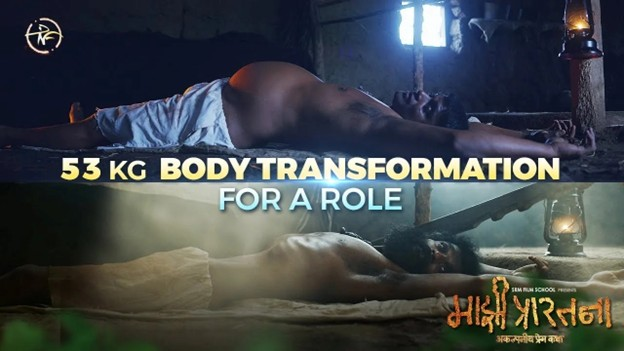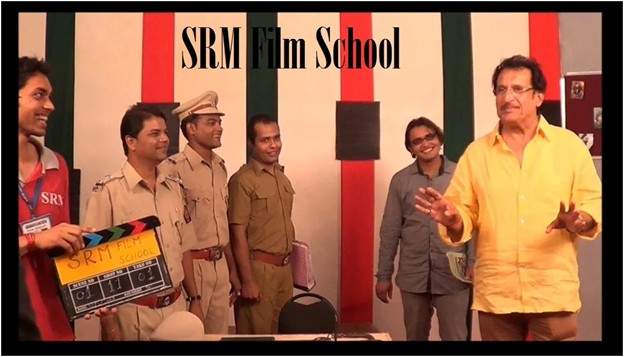
Padmaraj Rajgopal Nair
In the fast-changing world of Indian cinema, where stories aim to balance emotional truth with the expectations of performance very few artists redefine what commitment truly means. One such rare visionary is Padmaraj Rajgopal Nair. A filmmaker, producer, mentor, educator, and acting philosopher, Padmaraj has spent more than two decades shaping the careers and mindsets of thousands of aspiring actors through SRM Film School, founded in 2001 in Mumbai.
Under his guidance, the institution has grown into one of India’s most trusted and respected acting academies, celebrated for its focus on authenticity, discipline, and performance excellence. But among all his contributions, one decision has placed him in global conversations: his extraordinary transformation of losing 53 kilograms for Majhi Prathana, a film that marks his debut as both lead actor and director.
Across global cinema, dramatic body transformations are rare and often praised—Christian Bale for The Machinist, Matthew McConaughey for Dallas Buyers Club, Charlize Theron for Monster, and Tom Hanks for Cast Away. Yet Padmaraj’s journey stands apart. Unlike Hollywood transformations fueled by massive studio budgets and award-season campaigns, his metamorphosis was driven purely by artistic truth, not publicity.
No prosthetics.
No CGI.
No shortcuts.
His body became the narrative, and the transformation became a spiritual and psychological surrender rarely witnessed in cinema.
This was not just weight loss—it was a rebirth of purpose.
The Journey of a Relentless Transformation
When news emerged that Padmaraj had shed 53 kilograms for a single role, the Indian film industry was stunned. In an age where most transformations are cosmetic or digitally enhanced, his decision instantly set a new benchmark.
Unlike international stars who undergo physical changes with medical teams and global support, Padmaraj did it as a first-time filmmaker determined to honour the emotional weight of his character in Majhi Prathana.
This wasn’t a publicity tactic—it was a sacred artistic pledge.
For months, he followed a medically supervised regimen:
- a minimalistic, precisely calculated diet,
- a gruelling exercise routine,
- and an emotional journey filled with hunger, isolation, and introspection.
Every kilogram lost represented more than physical effort—it symbolized ego shed, comfort sacrificed, and absolute devotion to storytelling.
By the time the camera rolled, he was unrecognizable—not because he looked different, but because he felt different. His presence on screen carried real suffering, real silence, and real surrender.
Viewers didn’t see a performance. They saw truth, carved through endurance.
A Philosophy Rooted in Truth and Transformation
To understand why Padmaraj pushed himself so far, one must understand his philosophy:
Acting is not imitation—it is transformation.
At SRM Film School, this belief forms the foundation of every lesson. Padmaraj trains students using globally respected methods such as:
- Stanislavski for emotional realism,
- Meisner for instinctive response,
- Method Acting for total immersion.
But he does not simply replicate global systems—he redefines them for Indian cinema. He adapts them to suit Indian languages, cultural contexts, commercial formats, and storytelling patterns.
His teachings demand:
- emotional honesty,
- physical discipline,
- deep introspection,
- and surrender to character.
And with Majhi Prathana, he demonstrated his philosophy with his own body. It was not a classroom lecture—it was a living example. He did not expect his students to follow him blindly; instead, he showed them what it means to live your art fully, even when it hurts.
Building SRM Film School: A Legacy of Integrity

Founded in 2001, SRM Film School is more than an acting academy—it is a legacy built on integrity. Starting with a simple vision rather than expensive infrastructure, Padmaraj created a space where actors could train without pretence.
Over the years, the school has trained over 10,000 students, many of whom now work in Bollywood, regional industries, OTT platforms, and theatre.
SRM’s success comes from Padmaraj’s hands-on approach. He is not a passive founder—he teaches, mentors, and pushes students daily. His classes focus on:
- voice and body training,
- screen presence,
- movement,
- emotional depth,
- and audition preparedness.
Students enter SRM unsure of themselves—but leave with clarity, resilience, and artistic confidence.
A Mentor Who Leads by Living the Truth
Students often describe Padmaraj as a mentor who changes lives, not just performances. His impact is emotional, mental, and artistic. He teaches his students how to survive rejection, stay grounded in success, and stay authentic in an industry filled with compromises.
His transformation for Majhi Prathana became a powerful message to them:
Greatness requires sacrifice. True art demands everything.
It wasn’t a lesson in a book—it was a lesson lived in his flesh.
A Vision for Global Indian Actors
Padmaraj dreams of SRM Film School becoming a world-class conservatory, blending Indian performance heritage with global acting techniques. His vision is clear:
Indian actors must not just participate in global cinema—they must lead it.
He aims to train actors who can stand confidently on international stages, with performances that carry cultural depth and universal truth.
His method is a fusion of Indian emotionality and global precision—an approach that can redefine how the world perceives Indian performers.
Conclusion: A Cultural Shift in Indian Cinema
Padmaraj Rajgopal Nair’s transformation is not defined by kilograms lost, but by courage gained. His journey signals a new era for Indian cinema—an era where truth, commitment, and discipline shape storytelling more than glamour ever could.
Through Majhi Prathana and SRM Film School, he has sparked a cultural movement—one that elevates Indian acting onto the global stage with seriousness and respect.
His story is not just a personal triumph.
It is a historic moment.
A declaration that Indian cinema has entered a new age of integrity, intensity, and artistic fearlessness.





